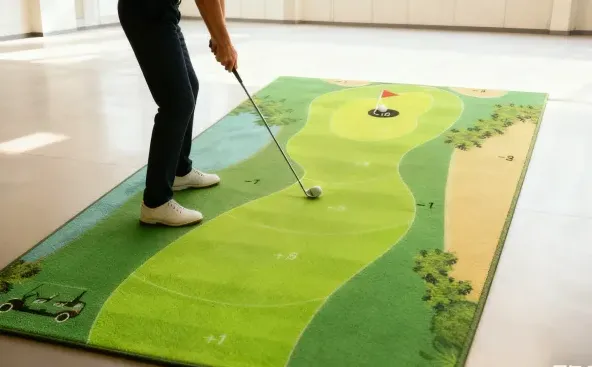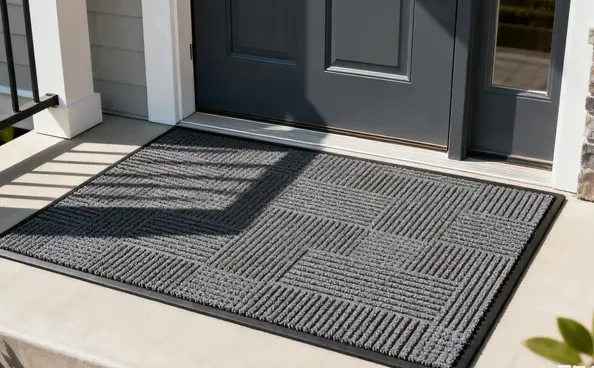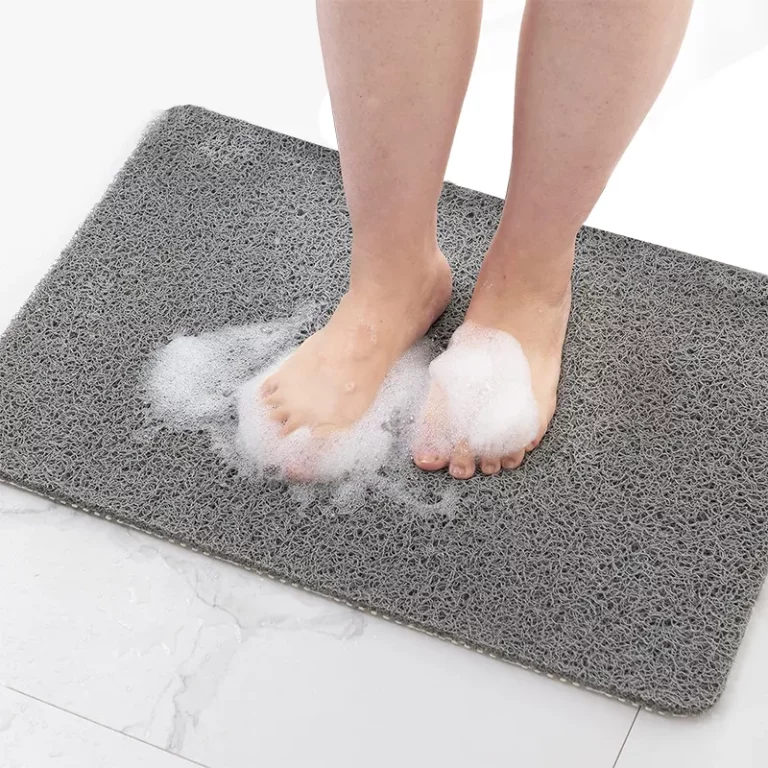Eco-Friendly Carpet: Sustainable Choices for Your Floors and Rugs
Are you considering new flooring but worried about the environmental impact? Umweltfreundliche Teppiche offer a perfect blend of style, comfort, and sustainability. This comprehensive guide will help you understand the benefits of choosing sustainable carpets and how they can improve your home and the planet.

Inhaltsverzeichnis
Was macht einen Teppich umweltfreundlich?
Ein umweltfreundlicher Teppich besteht aus Naturfasern oder recycelte Materialien that are sustainable and environmentally friendly.
Hauptmerkmale:
- Naturfaser: Materialien wie Wolle, Jute, Und Sisal.
- Recycelter Inhalt: Carpets made from recycelter Kunststoff or old carpets.
- Geringe VOC-Konzentration: Emits fewer flüchtige organische Verbindungen (VOCs), improving Raumluftqualität.
- Biologisch abbaubar: Zersetzt sich auf natürliche Weise und reduziert so die Umweltbelastung.
By choosing carpets made from erneuerbare Ressourcen, you’re supporting sustainability and reducing your carbon footprint.
Why Choose Sustainable Carpets?
Die Entscheidung für sustainable carpets offers numerous benefits for both your home and the environment.
Umweltvorteile:
- Weniger Abfall: Verwenden recycelte Materialien minimizes landfill waste.
- Geringere Emissionen: Umweltfreundliche Teppiche have fewer harmful chemicals, leading to better air quality.
- Ressourcenschonung: Nutzung erneuerbare Ressourcen lessens the strain on natural habitats.
Personal Benefits:
- Haltbarkeit: Viele sustainable carpets are known for their Haltbarkeit, providing a long-lasting flooring solution.
- Healthier Living Environment: Fewer toxins mean a healthier home for you and your family.
- Ästhetischer Reiz: Umweltfreundliche Teppiche come in various styles and colors to match any decor.
Wie verbessern umweltfreundliche Teppiche die Luftqualität in Innenräumen?
Indoor air quality is crucial for a healthy living space. Umweltfreundliche Teppiche contribute positively by:
- Reducing VOCs: Lower levels of flüchtige organische Verbindungen minimize respiratory issues.
- Natural Air Purification: Manche Naturfasern like wool can help regulate humidity and purify the air.
- Hypoallergenic Options: Materialien wie Jute Und Sisal are less likely to trigger allergies.
By improving Raumluftqualität, you’re creating a safer and more comfortable home environment.
What Are the Best Natural Fiber Carpets?
Choosing carpets made from Naturfasern is a great way to embrace sustainability.
Wollteppich
- Vorteile:
- Haltbarkeit: Naturally resilient, maintaining appearance over time.
- Komfort: Soft underfoot, adding warmth to any room.
- Feuerbeständigkeit: Wool is naturally flame-retardant.
- Überlegungen:
- Kosten: Typically higher priced due to quality.
- Wartung: May require specific cleaning methods.
Jute-Teppich
- Vorteile:
- Umweltfreundlich: Made from plant fibers, biodegradable.
- Textur: Provides a rustic, natural look.
- Überlegungen:
- Haltbarkeit: Best suited for low-traffic areas.
Sisal Carpet
- Vorteile:
- Stärke: Highly durable, suitable for high-traffic areas.
- Ästhetisch: Neutral tones complement various decor styles.
- Überlegungen:
- Komfort: Not as soft underfoot as wool.
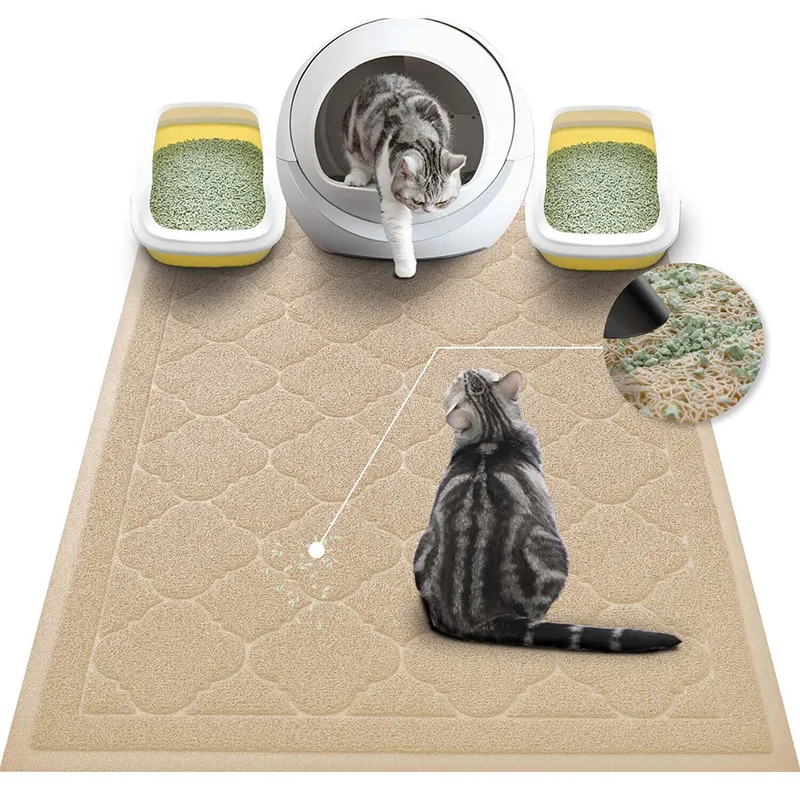
Alt text: Eco-Friendly Cat Litter Mats
Verschönern Sie Ihr Zuhause mit unseren Umweltfreundliche Katzenstreumatten that combine sustainability with functionality.
Can Synthetic Carpets Be Eco-Friendly?
Yes, synthetic carpets can be eco-friendly when made from recycelte Materialien or designed for sustainability.
Recycled Nylon Carpet
- Vorteile:
- Haltbarkeit: Strong and long-lasting.
- Nachhaltigkeit: Made from recycled nylon, reducing waste.
- Umweltauswirkungen:
- Reduced Resource Consumption: Less reliance on new raw materials.
- Geringere Emissionen: Modern manufacturing processes minimize pollutants.
PET Polyester Carpet
- Hergestellt aus: Recycled plastic bottles.
- Vorteile:
- Fleckenbeständigkeit: Naturally repels stains.
- Weichheit: Comfortable underfoot.
- Umweltauswirkungen:
- Abfallreduzierung: Utilizes plastic that might otherwise end up in landfills.
By selecting synthetic carpets with sustainable features, you can enjoy the benefits of modern materials while supporting the environment.
How Does Carpet Recycling Work?
Carpet recycling involves converting old carpets into new products.
Process:
- Collection: Old Teppich is collected from homes or businesses.
- Sorting: Carpets are sorted by material type.
- Processing: Materials are broken down into fibers or pellets.
- Herstellung: Recycled materials are used to create new Teppich or other products.
Vorteile:
- Abfallreduzierung: Decreases the amount of Teppich in landfills.
- Resource Conservation: Reuses existing materials, saving energy and raw resources.
- Wirtschaftswachstum: Creates jobs in the recycling and manufacturing industries.
Are Carpet Tiles a Sustainable Option?
Teppichfliesen offer a flexible and eco-friendly flooring solution.
Vorteile:
- Minimal Waste: Tiles can be purchased to fit exact dimensions, reducing excess.
- Einfacher Austausch: Damaged tiles can be replaced individually, extending the carpet’s lifespan.
- Recyclable Materials: Many are made from recycelte Materialien and can be recycled again.
Environmental Impact:
- Geringere Emissionen: Less material production reduces overall emissions.
- Nachhaltigkeit: Supports a circular economy by promoting recycling.
Tips for Choosing Eco-Friendly Carpets for Your Home
Die richtige Wahl umweltfreundlicher Teppich beinhaltet die Berücksichtigung mehrerer Faktoren.
Certification Labels:
- Green Label Plus: Indicates low VOC emissions.
- Von der Wiege zur Wiege: Denotes products designed with the environment in mind.
Material Considerations:
- Naturfasern: Opt for materials like Wolle, Jute, oder Sisal.
- Recycelter Inhalt: Look for carpets made from recycelte Materialien.
Manufacturing Practices:
- Environmental Policies: Choose companies committed to sustainable practices.
- Transparenz: Manufacturers should provide information about the Produktionsprozess and materials used.
Personal Needs:
- Lifestyle: Consider durability for high-traffic areas.
- Budget: Sustainable options are available at various price points.
- Ästhetik: Select styles and colors that complement your home.
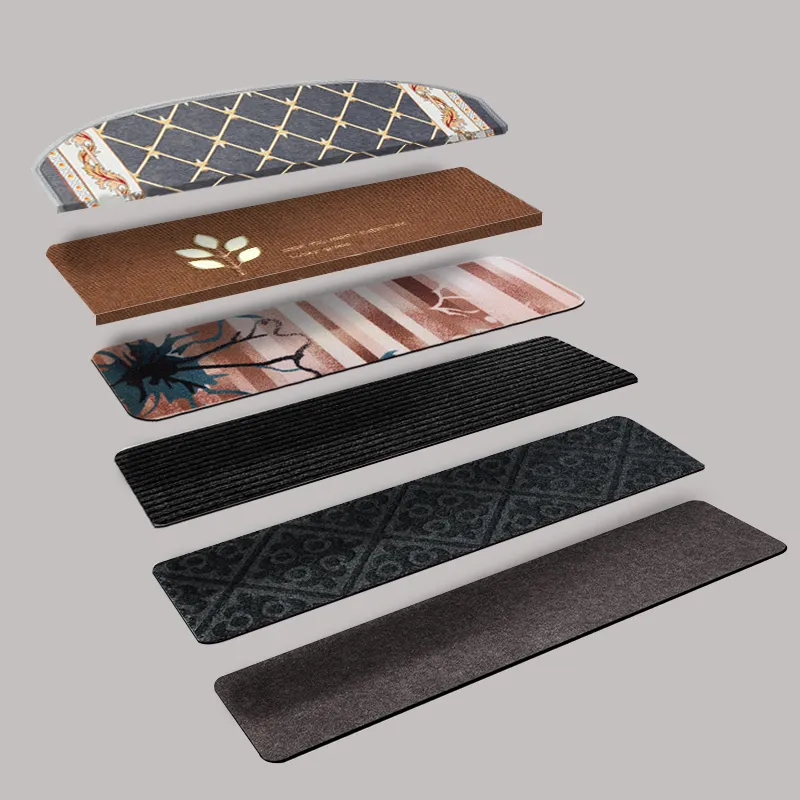
Alternativtext: Rutschfeste Treppenmatten
Ensure safety and sustainability with our Rutschfeste Treppenmatten crafted from eco-friendly materials.
The Environmental Impact of Traditional Carpets
Traditional carpets often have negative effects on the environment.
Issues:
- High VOCs: Release flüchtige organische Verbindungen, affecting indoor air.
- Non-Biodegradable: Made from synthetic fibers that don’t decompose.
- Resource Intensive: Production consumes significant energy and raw materials.
By understanding these impacts, you can make informed decisions to opt for umweltfreundliche Optionen.
How to Care for Your Eco-Friendly Carpet
Die richtige Wartung verlängert die Lebensdauer Ihres nachhaltiger Teppich.
Reinigungstipps:
- Regelmäßiges Staubsaugen: Keeps dirt from settling into fibers.
- Fleckenentfernung: Verwenden eco-friendly cleaning products for stains.
- Professionelle Reinigung: Consider services that specialize in umweltfreundliche Teppiche.
Protection:
- Use Rugs and Mats: Place in high-traffic areas to reduce wear.
- Möbel drehen: Prevents indentations and uneven fading.
Proper care not only maintains appearance but also supports the longevity of the carpet, reducing the need for frequent replacement.
Abschluss
Umarmen umweltfreundliche Teppiche is a step towards a more sustainable lifestyle. From improving Raumluftqualität to reducing environmental impact, the benefits are numerous. Whether you choose a natural fiber carpet or a synthetic one made from recycelte Materialien, you’re contributing positively to the planet. With a multitude of styles and options available, finding the perfect nachhaltiger Teppich for your home has never been easier.
Die wichtigsten Erkenntnisse
- Umweltfreundliche Teppiche: Hergestellt aus Naturfasern oder recycelte Materialien, promoting sustainability.
- Indoor Air Quality: Lower VOCs improve the air you breathe at home.
- Naturfasern: Optionen wie Wolle Und Jute offer both durability and environmental benefits.
- Synthetic Options: Recycled nylon Und PET polyester are sustainable synthetic choices.
- Carpet Recycling: Reduces waste and conserves resources.
- Teppichfliesen: Offer a flexible and eco-friendly flooring solution.
- Choosing Wisely: Look for certifications, sustainable materials, and responsible manufacturers.
- Pflege und Wartung: Die richtige Pflege verlängert die Lebensdauer Ihres umweltfreundlicher Teppich.
For more sustainable home solutions, explore our products:
- Umweltfreundliche Treppenmatten – Stylish and made from renewable materials.
- Velours-Fußmatten mit Prägung – Add elegance with environmentally friendly options.
- Kindermatten – Safe and sustainable choices for your little ones.
Upgrade your home with umweltfreundliche Teppiche and enjoy the benefits of a healthier living environment for you and the planet.

